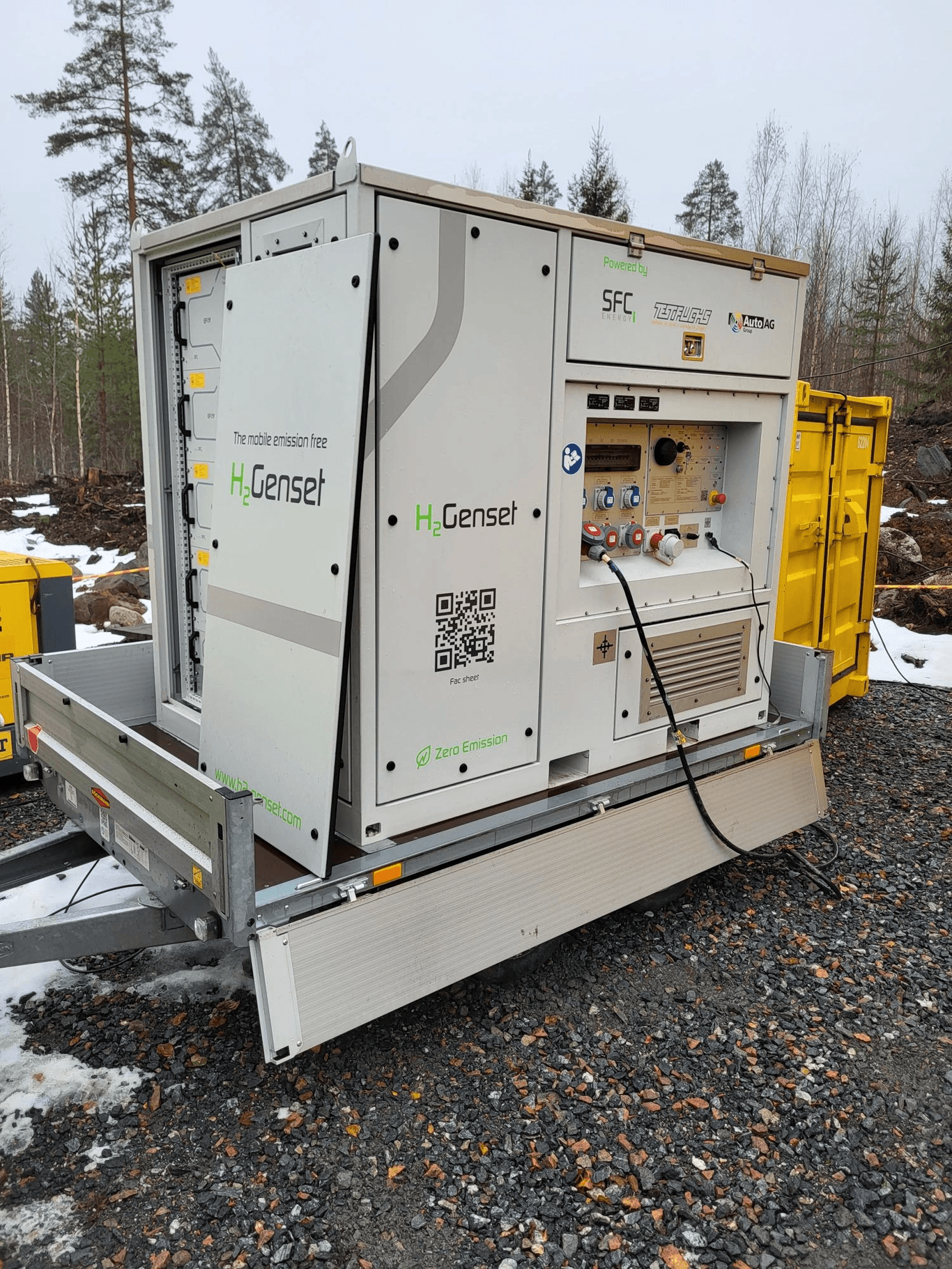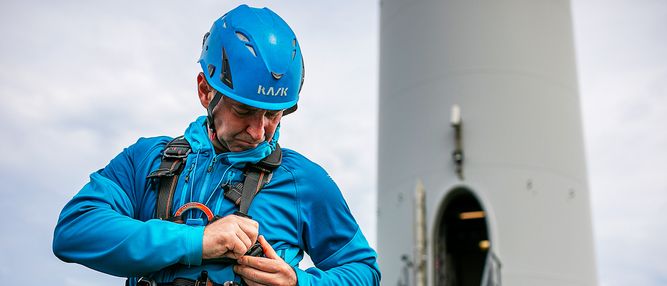Nya typer av generatorer minskar koldioxidutsläppen under byggfasen
The greenhouse gas emissions from our projects mainly come from materials, land use, and construction activities. Technological advancements in the industry enables a reduction of our climate impact. OX2 welcomes these technological advancements and hope that best practice in short will be common practice.
Generators are used to achieve on-site electricity production, which is crucial when constructing a wind farm. Diesel is the most common fuel for generators, which generate electricity for on-site offices and wind turbines during installation. Different ways to reduce negative impacts associated with the generators have been tested in OX2 projects, including hybrid generators and generators that run on hydrogen.
The alternatives to conventional generators include alternative fuels, such as biodiesel and hydrogen, and hybrid generators which run on both fuel and batteries. OX2 welcomes technological advancements within the industry and have followed the test of hydrogen and hybrid generators in projects lead by our suppliers.
Hybrid generators
Hybrid generators were used when constructing the Karskruv and Marhult wind farm projects. As a result, approximately 6,000 thousand tonnes of carbon dioxide equivalents could be avoided.
Due to reduced diesel consumption, hybrid generators are a cost competitive alternative to conventional diesel-fueled generators. In the case of Karskruv and Marhult, costs associated with generators could be reduced by around 15 percent.
“The adoption of hybrid generators showed me not only that cost and greenhouse gas reduction can go hand in hand, but also that actors within the industry are eager to embrace new technologies, which indicate further improvements ahead” says Johan Höök Karskruv and Marhult Construction Project Manager

The main bottleneck for further adoption is the supply of hybrid generators. There needs to be an increase in hybrid generators, and accessible on a larger geographical footprint, to completely replace conventional diesel generators. OX2 follows the technological advancements and welcomes the adoption of new technology within the renewable energy industry.
Hydrogen generators
The supplier Destia have tested generators that run on hydrogen in the Niinimäki wind farm project. The hydrogen-fueled generators do not emit greenhouse gas emissions, but water vapor, which clearly improves the sustainability performance of the construction phase. These generators also generate less noise, which is a good effect for the working environment on site, the local community, and for animals in the area.
This is a new technology that has been tested on a smaller scale. In the case of Niinimäki, the generators provide electricity and heat for the on-site offices and provide the possibility to charge electrical vehicles and machinery on-site. The testing has been successful and Destia was able to power site facilities with hydrogen for testing period without out shortages.
Further testing and a maturing hydrogen market is needed to adopt hydrogen generators on a larger scale. Another challenge to be addressed is the price premium which is noticeable both in terms of the generator and the fuel. The hydrogen market is in its infancy and expected to grow substantially as part of the green transition, enabling the industry to advance.
"I see potential in using hydrogen-driven generators for additional purposes and at a larger scale, but we need additional and more long-lasting testing” says Ville Häkkinen, Niinimäki Construction Project Manager
Read more about the testing here (in Finnish).


